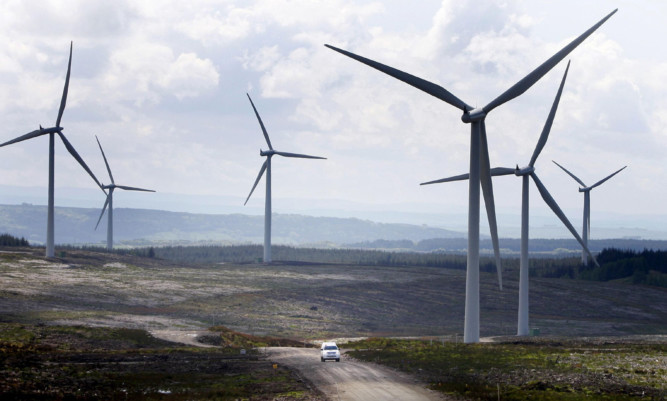
Enough electricity to power homes in Aberdeen for a year and a half was lost by windfarms this year.
Lack of wind has been blamed for energy production levels slumping 30% compared to last summer.
And it comes despite record numbers of eyesore wind turbines being built across Scotland with more than 1,000 currently waiting to be erected.
Critics have seized on the unpredictable energy flow from windfarms as stark evidence they are a waste of time.
And say the fact they continue to be subsidised to the tune of millions whether they are working or not underlines how lost the current Government is with regards to its green energy commitments.
Linda Holt, of anti-windfarm campaign group Scotland Against Spin, said: “Incorporating a significant quantity of wind-generated electricity into the electricity system required by a modern industrial economy requires corresponding back-up generation and grid balancing.
“These costs are borne exclusively by the consumer, not the wind industry. While the wind industry coins it in, consumers are on a hiding to nothing.”
Analysis by the Renewable Energy Foundation revealed, in the second quarter of 2013, Scottish onshore windfarms had wind turbines with a combined capacity of 4.3 gigawatts, which generated 2,287 gigawatt hours (GWh) of electricity.
During the second quarter of this year there were 5% more turbines, taking the capacity to 4.5 gigawatts but the amount of energy they produced plunged 30% to just 1,577GWh, because the weather across the country was just too calm.
This means a year’s supply of electricity for 150,000 households was lost.
A staggering £1.8bn Government subsidies have already been awarded since 2007 and a further £80m spent paying operators to turn them off, to stop them producing too much power, during windy periods.
But Renewable Energy Foundation director Dr John Constable, believes taxpayers will be stung by a further £5bn-a-year bill by 2020 to cover the cost of volatile wind power output.
He claims much of this cost will be borne out of the need to keep traditional power plants running at an uneconomically low level to meet demand when turbines don’t work.
Meanwhile, it has emerged Scotland is continuing to build new turbines at double the rate of the rest of the UK combined, despite it already being on the brink of hitting its European renewable energy targets.
Figures from RenewablesUK show there were 383 turbines under construction in Scotland in July, with just 153 in the rest of the UK.
Scottish Conservative energy spokesman Murdo Fraser said: “It is vital the SNP stop building more turbines in some desperate attempt to add credibility to their wind obsession.”
A Scottish Government spokesperson said the claims fail to recognise the scale and extent of the benefits onshore wind brings to Scotland in terms of jobs, the environment, and millions of pounds of community benefit payments.
He said: “Statistics estimate renewables met a record-breaking 46.4 per cent of gross consumption in 2013.”

Enjoy the convenience of having The Sunday Post delivered as a digital ePaper straight to your smartphone, tablet or computer.
Subscribe for only £5.49 a month and enjoy all the benefits of the printed paper as a digital replica.
Subscribe